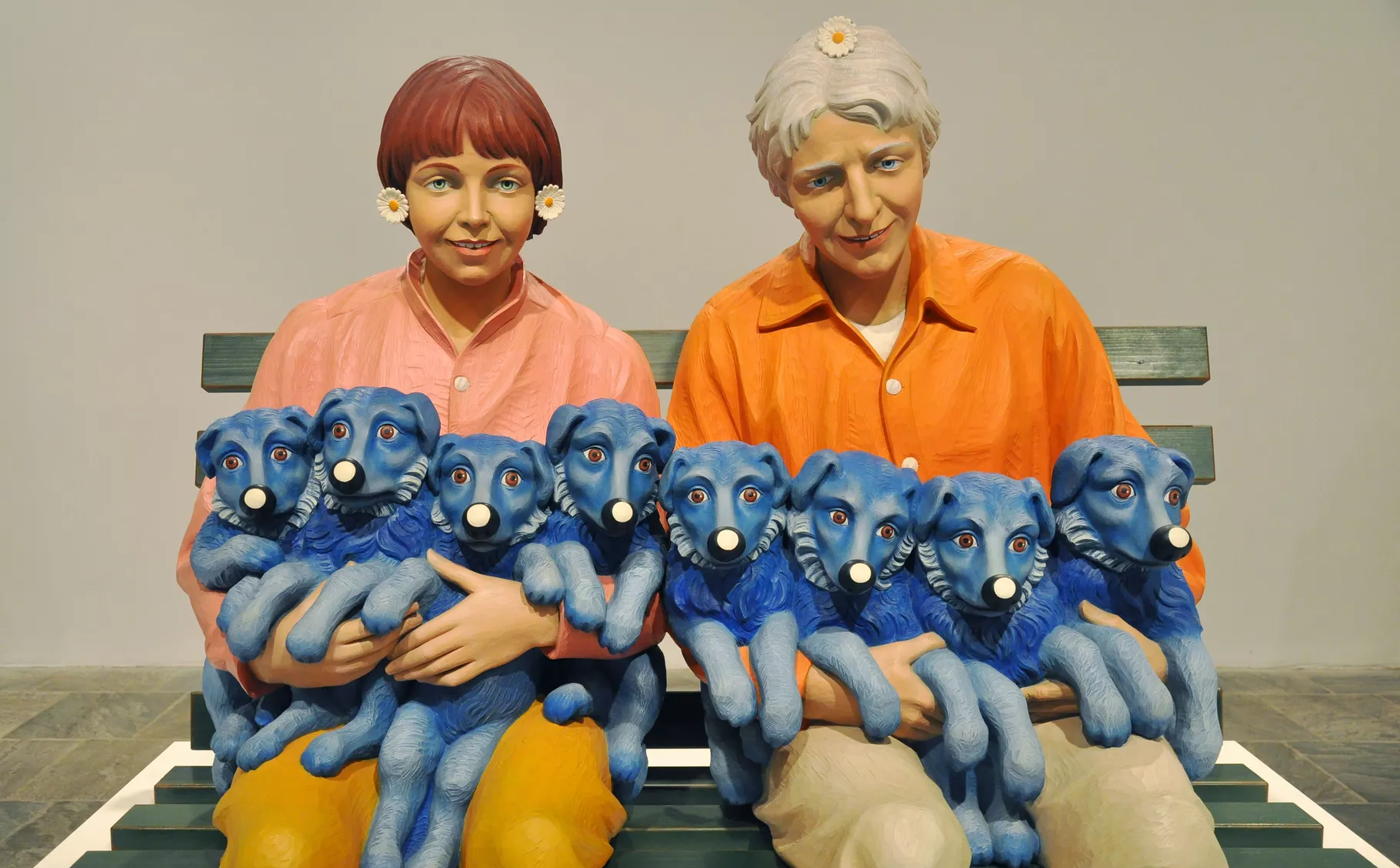Summary
What is appropriation art? Find out about the history of the movement, key artists, and the spiciest copyright lawsuits in the art world!
What is appropriation art? It is an art form practiced by artists who use pre-existing objects or pictures to generate new artworks, with few modifications to the original. The intentional “copying” of an image or object into a new context is often referred to as “re-contextualization”. Artists use re-contextualization as a method to comment on the image or object’s original meaning.
Art appropriation has often been misidentified as unoriginal or theft, with many artists facing allegations of plagiarism. But before we get into that, first, let’s take a look at the history of appropriation art.
History of Appropriation Art
Early 20th century
Appropriation is not as recent as some may think. Drawing its roots back to the early 20th century, it was used by Cubist artists Pablo Picasso and Georges Braque, who included in their collages real pieces of newspapers. The practice developed further with the introduction of Marcel Duchamp‘s readymades – artworks made from dull, practical manufactured objects. For instance, Fountain, a signed porcelain urinal, was an icon of 20th century art.

Marcel Duchamp, Fountain, 1917. Photographed by Alfred Stieglitz. Wikipedia Commons (public domain).
Surrealism
In the 1930s, Surrealists also dabbled with re-contextualization in their work, especially in collages but not only. Salvador’s Dalí‘s Lobster Telephone is a classic example of a Surrealist object. Lobsters and telephones alike had strong sexual connotations for Dalí, who held the belief that such items could reveal the desires of the unconscious. In this particular example, the tail of the lobster, where its reproductive parts can be found, is located over the telephone’s mouthpiece.

Salvador Dalí, Lobster Telephone, 1938, Tate, London, UK. Museum’s website. © Salvador Dali, Gala-Salvador Dali Foundation/DACS, London 2020.
Pop Art!
Later on, appropriated objects and images were used frequently by Pop Artists such as Jasper Johns, Robert Rauschenberg, and Roy Lichtenstein. Johns’ famous work includes a rendition of the American flag and other US-related themes, whereas Lichtenstein is best-known for copying images from comic books in his artworks, such as Drowning Girl (1963).
As their name indicates, Pop Artists employed reproductions, juxtaposition, and the repetition of images found in popular culture, such as the portraits of famous actors, singers, and even well-known brands of soup! One of the most notorious examples of appropriation art is Andy Warhol‘s Campbell’s Soup Cans series. Warhol isolated the brand’s recognizable brand name and tapped into notions of consumerism, capitalism, commercialism, and fast food, essentially generating in this way a new meaning by creating associations with the idea of Campbell’s soup.
Pop artists did images that anyone walking down the street would recognize in a split second—comics, picnic tables, men’s pants, celebrities, refrigerators, Coke bottles.
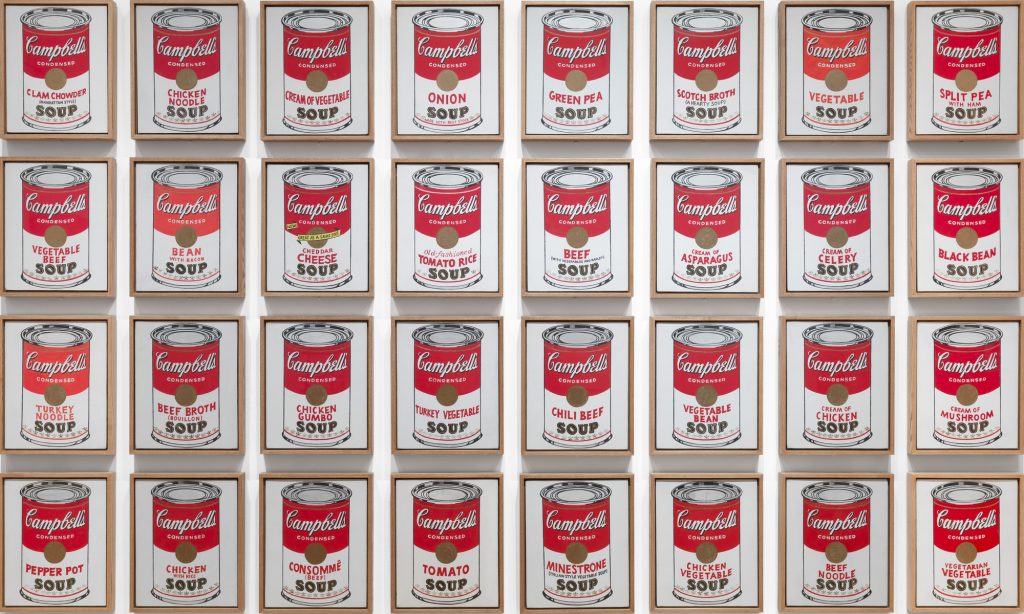
Andy Warhol, Campbell’s Soup Cans, 1962, Museum of Modern Art, New York, NY, USA. Museum’s website. © 2022 Andy Warhol Foundation / ARS, NY / TM Licensed by Campbell’s Soup Co.
The 1980s
Despite all this, appropriation art is most often associated with the 1980s. During this period, artists like Sherrie Levine and those of the Neo-Geo group, Jeff Koons in particular, started experimenting more with appropriation art. Sherrie Levine, for example, is known for reproducing famous paintings by Claude Monet and Kazimir Malevich.
In addition, the “Pictures” Generation, with Sherrie Levine, Cindy Sherman, and Richard Prince, began using photography to re-examine the idea of representation in art. You may know that Prince reshot the famous Marlboro commercials, and in doing so made a social commentary on the ubiquity of cigarette advertising.
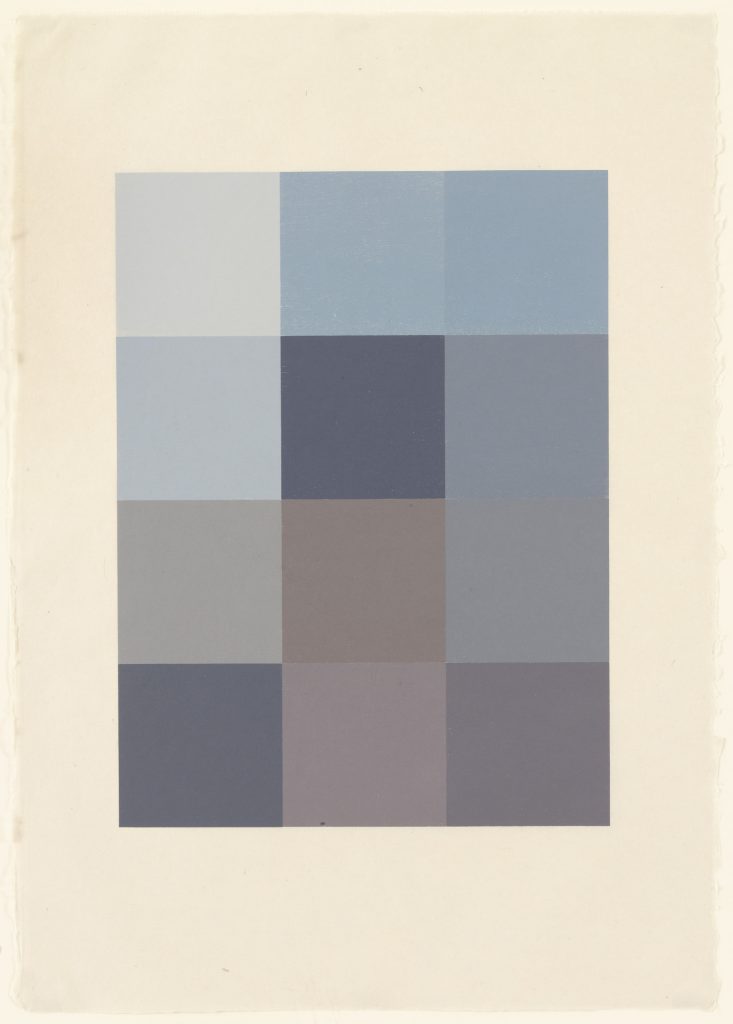
Sherrie Levine, After Monet from Meltdown, 1989, Museum of Modern Art, New York, NY, USA. Museum’s website. © 2022 Sherrie Levine.
Famous Copyright Cases
Appropriation art often takes the stand (pun intended) in law cases involving copyright claims because it is somewhat of a hot topic in the art world. It raises uncomfortable questions about authenticity, authorship, and even the meaning of art.
There is no international copyright law, which means that the same protections guaranteed in one jurisdiction may be inapplicable in another. Copyright law is a complex area of the law and it is rarely straightforward since it is influenced by market trends, cultural and social norms, and the subjective beliefs of the judges, legislators, and, where applicable, juries. Because of this, even seemingly identical cases may be decided differently across the globe.
Andy Warhol Foundation for Visual Arts v. Goldsmith
In 2017, Andy Warhol Foundation for Visual Arts sued photographer Lynn Goldsmith (1948–present), asking the court to decide whether this 1984 artwork of the singer Prince did violate her copyright.
In the 1980s, Goldsmith’s photograph of Prince was licensed to Vanity Fair Magazine. Warhol (1928–1987) was commissioned by Vanity Fair to create a painting using this photograph. However, the artist created 15 additional unlicensed works, part of the Prince Series. When Goldsmith discovered the unlicensed use of her photograph, she notified the Warhol Foundation about the infringement of her copyright.
In April 2021, the case reached the 2nd Circuit Court of Appeals in the United States, which decided that the Prince Series lacked “a fundamentally different and new artistic purpose and character” from the original photograph. It also noted that “it is entirely irrelevant to [the fair use] analysis that ‘each Prince Series work is immediately recognizable as a Warhol’.” Thus, as the Prince Series was not substantially different from Goldsmith’s photograph, it violated Goldsmith’s copyright over the Prince photograph.
The Warhol Foundation filed a request at the US Supreme Court for a rehearing of the case.
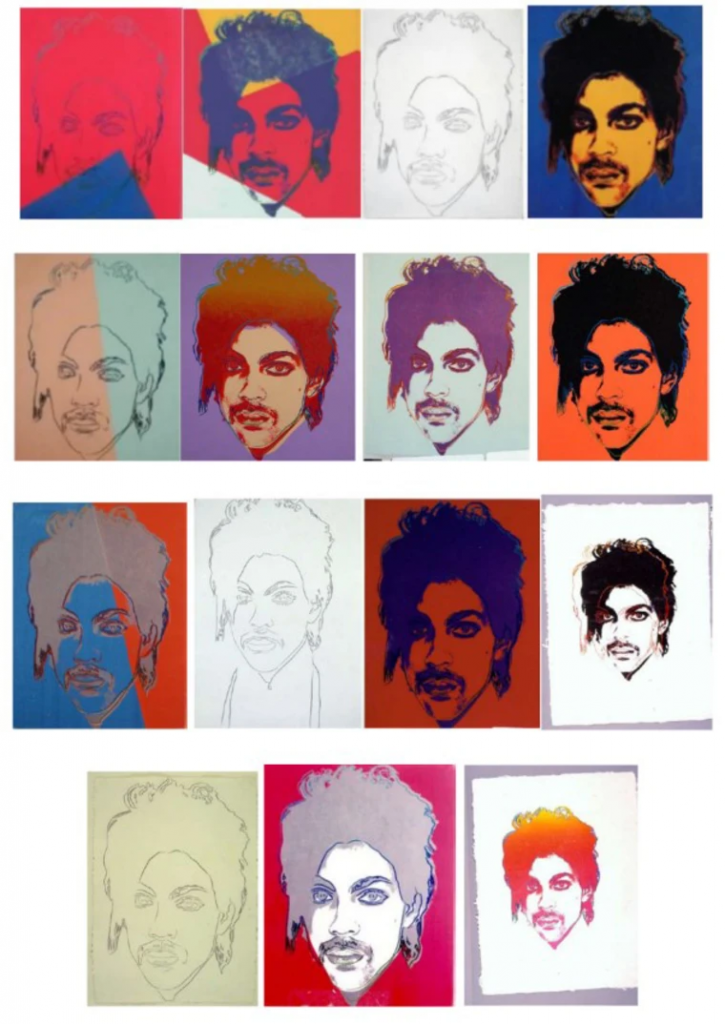
Andy Warhol, Prince Series. NBC News. Andy Warhol Foundation for the Visual Arts.
Rogers v. Koons
In this case, artist Jeff Koons (1955–present) appropriated a photograph by Art Rogers to create a sculpture of two people, a man and a woman, holding eight puppies. Koons sold several similar sculptures, earning a significant profit. When Rogers discovered the copy, he sued Koons for copyright to which Koons responded by claiming fair use by parody. String of Puppies, in Koons defense, wasn’t a replica, but a social commentary on contemporary society.
Although there are several differences between the photograph and sculptures, such as the bright blue color of the puppies, the two artworks are very similar. The court found that a “typical person” could recognize Rogers’ photograph in Koons’ artwork and rejected his parody defense, arguing that he could have used a more generic source of inspiration to achieve the same outcome, without appropriating Rogers’ work; “[i]n short, it is not really the parody flag that appellants are sailing under, but rather the flag of piracy”. In the end, the court ordered Koons to pay Rogers a financial settlement for the breach of copyright.
This is one of the most famous cases in the art world, raising important questions about the nature of derivative work. The decision in Rogers v. Koons was met with criticism because it limited artistic creativity as it restricted the artist’s right to choose their subject and method of execution. Critics argue that the court failed to recognize the originality of the sculptures; the court should’ve asked instead whether the new rendition transformed Rogers’ photograph completely. After the trial, as most commercial products, media images, and works by other artists are protected intellectual property, it remained unclear when and what artists could use as inspiration in their work without facing copyright lawsuits.
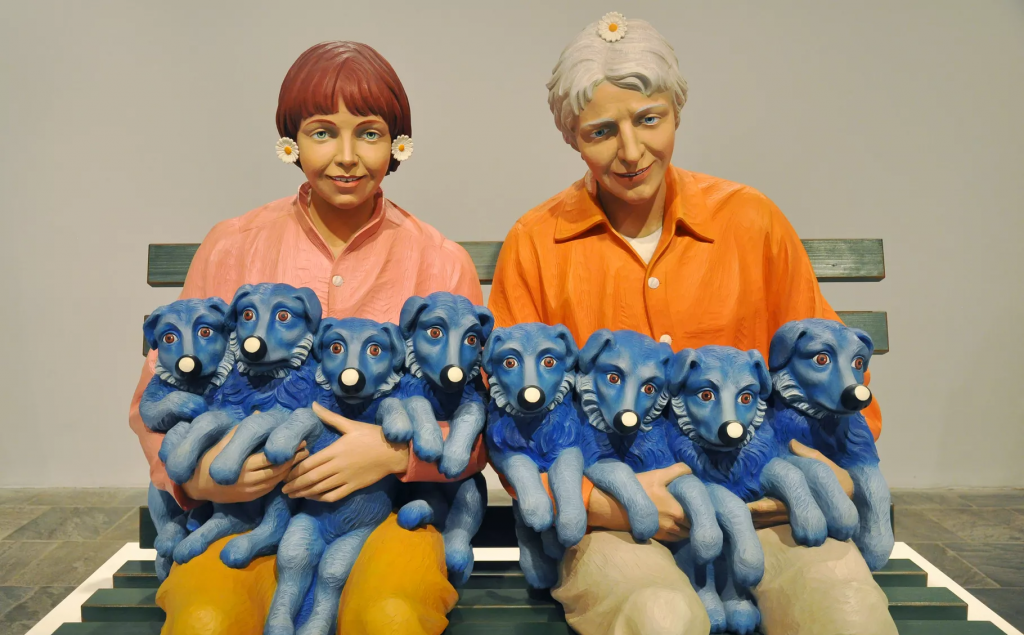
Jeff Koons, String of Puppies, 1988, Whitney Museum of American Art, New York, NY, USA. Photo by Amaury Laporte via Flickr/Artsy.
Fairey v. Associated Press
Shepard Fairey (1970–present), an American street artist, created the famous OBAMA HOPE poster during the US presidential elections in 2008, and it rapidly became a symbol of the Obama campaign. Associated Press demanded compensation for its fair use after discovering that the design for the poster was based on a photograph by AP freelancer Mannie Garcia. In response, Fairey sued Associated Press, arguing that his work did not devalue the original photograph.
The trial ended when the two parties came to a private settlement, agreeing to share the profits of the work. Initially, Farey claimed to have used another photograph of Obama. However he later admitted that he had misstated in the trial which photograph he had used for his design, submitted misleading images, and deleted others to conceal his actions. As in the Rogers case, the court was tasked with tackling the issue of whether the HOPE poster was in some way ‘transformative’ of the original photograph. If that were the case, the use of the photograph would’ve been permitted under the law, so as not to suppress creative expression.
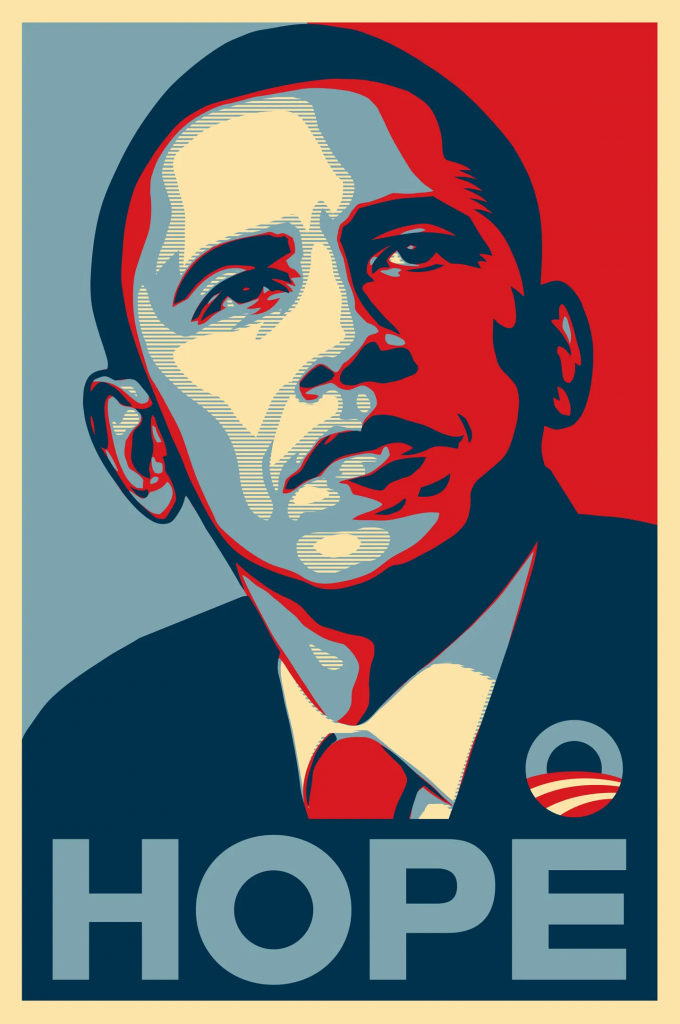
Shepard Farey, OBAMA HOPE poster based on a photo taken by Mannie Garcia for Associated Press. Obey Giant.
Cariou v. Prince
In this landmark case, photographer Patrick Cariou sued well-known appropriation artist Richard Prince (1949–present) for using his photographs. Prince created a series of 30 collages, which sold for millions of dollars, with photographs from Cariou’s 2000 Yes, Rasta photobook. The artworks are jarring depictions of Rastafarians and their surrounding environment, featuring distorted, modified human features and other forms. Again, Prince claimed fair use, although Cariou argued for copyright infringement.
The US 2nd District Court of Appeal ruled in Prince’s favor. Now 25 of the Price artworks are protected under fair use as they “manifest an entirely different aesthetic from Cariou’s photographs”. The court declined to express a view on the five remaining artworks in the series, leaving it for the lower court to decide. Given this, in a dissenting opinion, one of the judges argues that he considers this to be a rather arbitrary rejection.

Left: Patrick Cariou, Yes, Rasta; Right: Richard Prince, Graduation. ArtSpace.
Final Thoughts
As art evolves at a fast pace, copyright law needs to keep up with changes and adapt. These copyright cases are not so straightforward, and often leave behind unanswered questions about the nature of art and the rights and obligations of artists. For most of us, art is purely subjective, something that seems rather incompatible with the cold and impartial approach of the legal system. However, these copyright cases are proof that art and law can intermingle, and very often do so. Maybe the law cannot dictate what is art, but it can ensure that artists are guaranteed protection in regard to their work.
